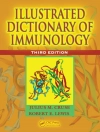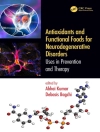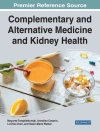This book, now in a revised and updated second edition, covers the full spectrum of clinical applications of SPECT/CT in the diagnosis and therapy planning of benign and malignant diseases. All chapters have been thoroughly updated and some chapters have been completely rewritten by a new group of experts.
The opening chapters discuss the technology and physics of SPECT/CT and its use in dosimetry. The role of SPECT/CT in the imaging of a range of pathologic conditions is then addressed in detail. Applications covered include imaging of the thyroid, neuroendocrine tumors, bone, cardiac scintigraphy, sentinel node scintigraphy and imaging of the lungs. Individual chapters are also devoted to therapy planning in selective internal radiation therapy of liver tumors and to Bremsstrahlung SPECT/CT.
For Nuclear Medicine Physicians, Radiologists and medical students in this field, the book offers an essential and up-to-date source of information on this invaluable hybrid imaging technique.
Tabela de Conteúdo
Technology and Physics of SPECT/CT.- Use of SPECT/CT for dosimetry.- SPECT/CT for parathyroid and thyroid imaging.- SPECT/CT for thyroid cancer imaging.-123Iod-MIBG SPECT/CT for tumor imaging.- SPECT/CT for neuroendocrine tumors.- Bone SPECT/CT in oncology.- Bone SPECT/CT in orthopaedics.- SPECT/CT for cardiac scintigraphy.- SPECT/CT in sentinel node scintigraphy.- Lung SPECT/CT.- Therapy planning in selective internal radiation therapy of liver tumors with SPECT/CT.- Bremsstrahlung SPECT/CT.- Miscellaneous (Brain SPECT/CT, inflammation, radiation planning, GI-Tract).
Sobre o autor
Prof. Dr. Hojjat Ahmadzadehfar, MSc is head of the Department of Nuclear Medicine at the Klinikum Westfalen in Dortmund, Germany. He received his medical degree from Guilan Medical University, Iran (1999) and completed his residency in Nuclear Medicine in Germany at the Department of Nuclear Medicine, University Hospital Bonn, Germany (2003-2008). From 2008 to 2013 he was the assistant medical director at the Department of Nuclear Medicine, University Hospital Bonn, and from 2013 until the end of 2019 he served as the head of the therapy section of the Department of Nuclear Medicine, University Hospital Bonn. Prof. Ahmadzadehfar serves as an editor and reviewer for several international journals and has authored and co-authored over 180 papers and book chapters. His main research areas are targeted radionuclide therapy and theranostics.
Prof. Dr. Hans-Jürgen Biersack was a Professor of Nuclear Medicine at the University of Bonn for more than 30 years and is now an Emeritus Professor. He has many years of experience as Director of the Klinik und Poliklinik für Nuklearmedizin in Bonn. In the course of a long and distinguished career, he has served as President of both the German Society of Nuclear Medicine (1992–1994) and the World Federation of Nuclear Medicine and Biology (1994–1998). He has received a number of awards, including the Georg von Hevesy Medal (2000), and was a Badgastein Lecturer in 1988, Dr. Luis Guerrero Lecturer in 1994, and L. Rao and Shanta Chervu Lecturer in 2000. He holds the Order of Merit from the Federal Republic of Germany and the Sign of Honor from the Red Cross. Professor Biersack has served on the editorial boards of numerous leading journals, and as editor for several journals. He is the author of 440 papers cited in Pub Med/MEDLINE as well as 310 book chapters and 35 books. He continues to work at the Betaclinic Bonn.
Prof. Dr. Ken Herrmann graduated from Charité Universitätsmedizin in Berlin, Germany in 2004 including stays at the Universite de Lausanne, Universidad Austral de Chile in Valdivia, and Memorial Sloan-Kettering Cancer Center in New York. Dr. Herrmann was trained in nuclear medicine at the Technische Universität München under the guidance of Professor Markus Schwaiger and subsequently completed an executive MBA at the University of Zürich. From 2011 to 2021, he has been a faculty member at the Department of Molecular and Medical Pharmacology of the University of California, Los Angeles (UCLA). In addition, from 2012 to 2016 Dr. Herrmann served as Vice Chair of Nuclear Medicine at the Universitätsklinikum Würzburg. In 2016 he was appointed Chair of Nuclear Medicine at the Universitätsklinikum Essen, Germany. Dr. Herrmann’s research focuses on hybrid molecular imaging including SPECT/CT and PET/CT and its clinical applications, on radionuclide theranostics, and on SPECT-/PET-based response assessment to oncologic therapies.












